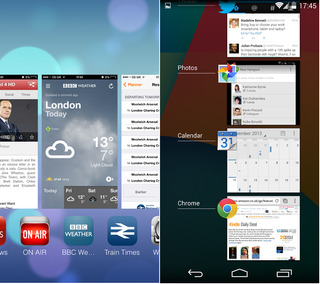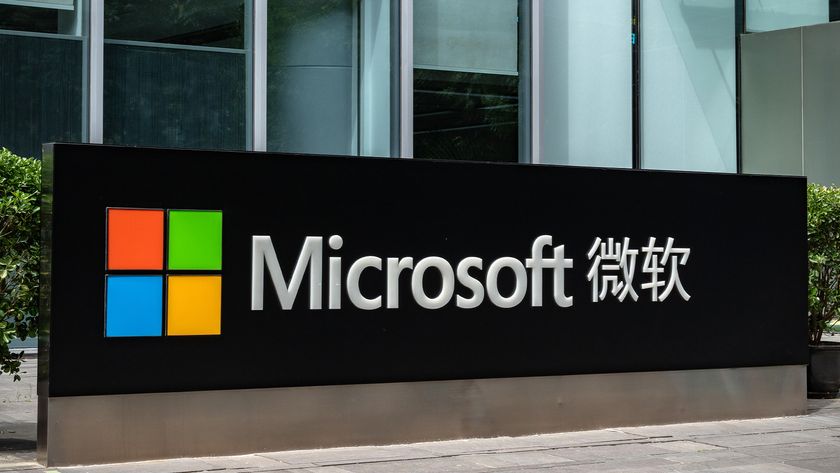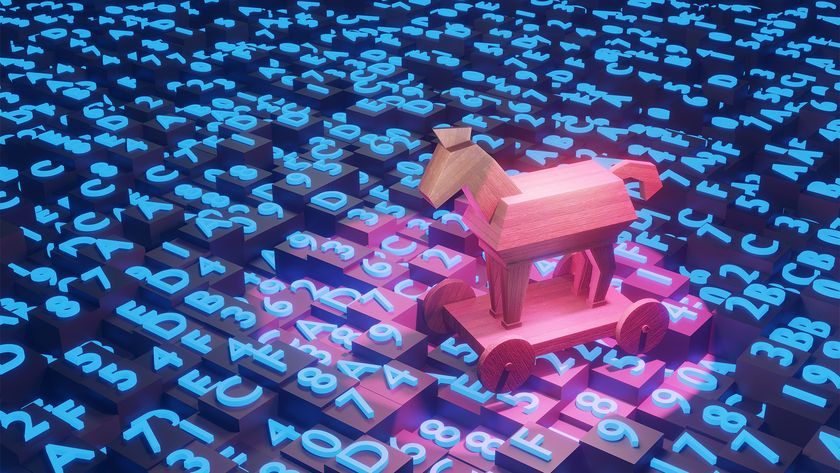Multitasking andBattery life
iOSdidn't support multitasking for third-party apps untiliOS4 and it was restricted to voice over IP and background audio.iOS7 expands this so all apps modified for the new operating system can receive content updates in the background. The operating system automaticallyauthorisesyour most used apps to receive automatic content updates, although you can turn this feature off for specific apps if you wish. Apple justifies these restrictions by claiming they help conserve battery life.
Android has always supported unfettered PC-style multitasking. This is more flexible than the app switchingfound iniOS7. However, it also means you have to be more vigilent as resource hungry apps can sap the battery.
TheiOS7 app switcher interface looks suspiciously similar tothe one inKitKat- a scrolling horizontal gallery ofminiaturisedapp windowsvsa vertical gallery in Android. The largeriOS7 windows are more legible than the smallerKitKatones making it handy as a primitive substitute for multiple onscreen windows, butKitKatfits in more windows making it easier to switch between multiple apps.

Apple's multitasking pane (left) now gives a snapshot of apps, a feature borrowed from Android
There's little to differentiate the software when it comes to battery life. Our anecdotal experience of everyday use tends to back this up. Even though the iPhone 5s has a smaller 1560mah battery than the Nexus 5's 2300mah battery, it lasted just as long or longer in light usage - managing 24 hoursvsthe Nexus' 21 hours. With heavy usage, both devices need to be charged at the end of each day.
WINNER: Tie. Android has more flexible multitasking, but theiOSapproach helps conserve battery life.
Get the ITPro. daily newsletter
Sign up today and you will receive a free copy of our Focus Report 2025 - the leading guidance on AI, cybersecurity and other IT challenges as per 700+ senior executives







